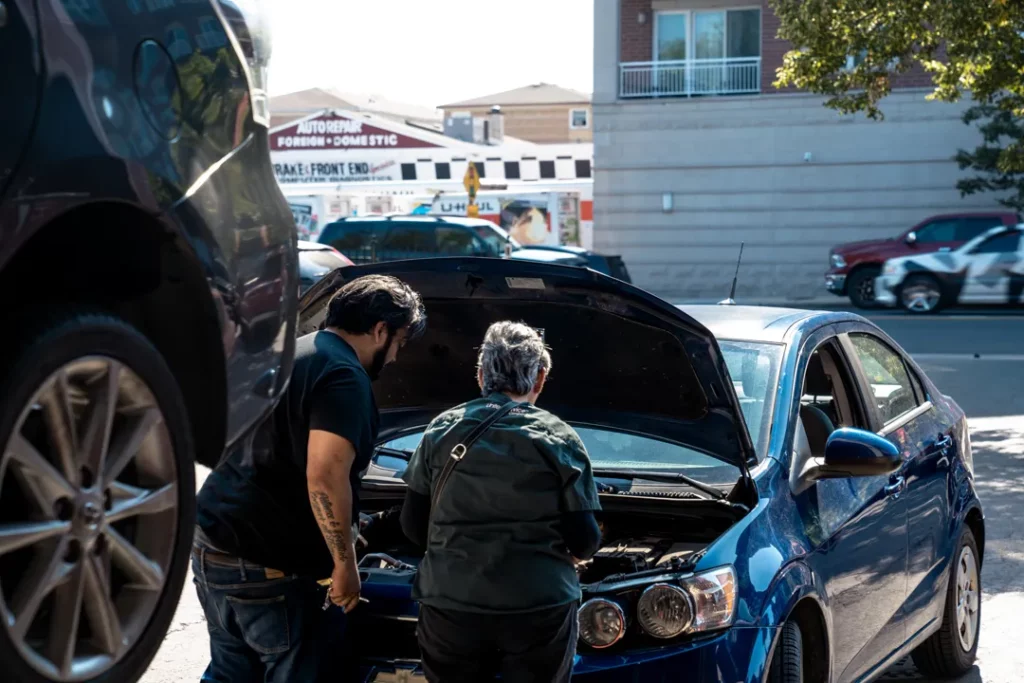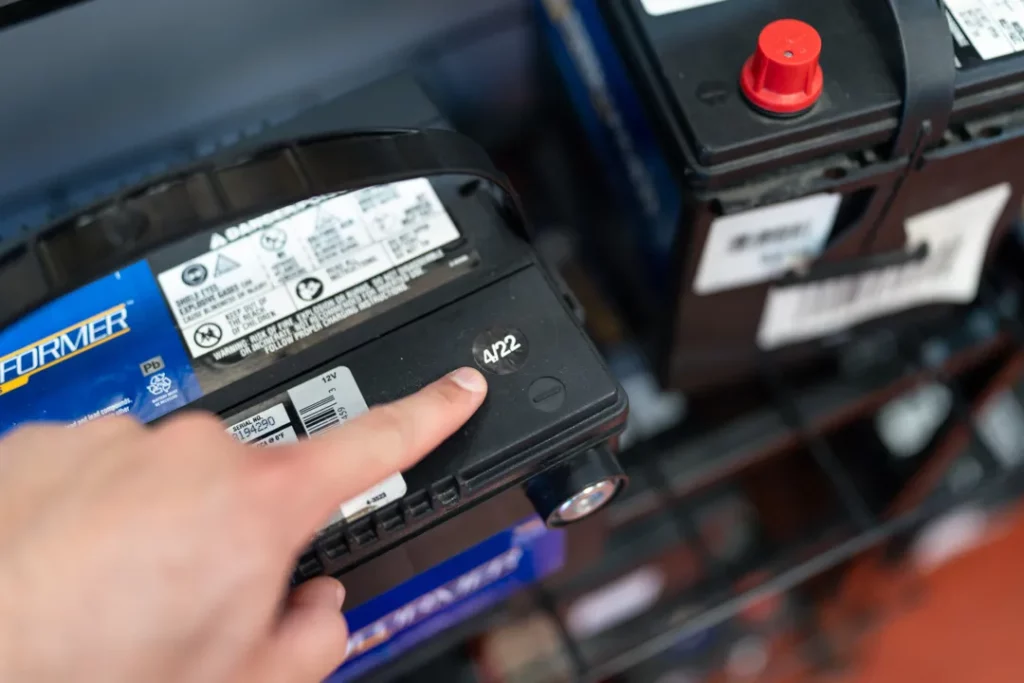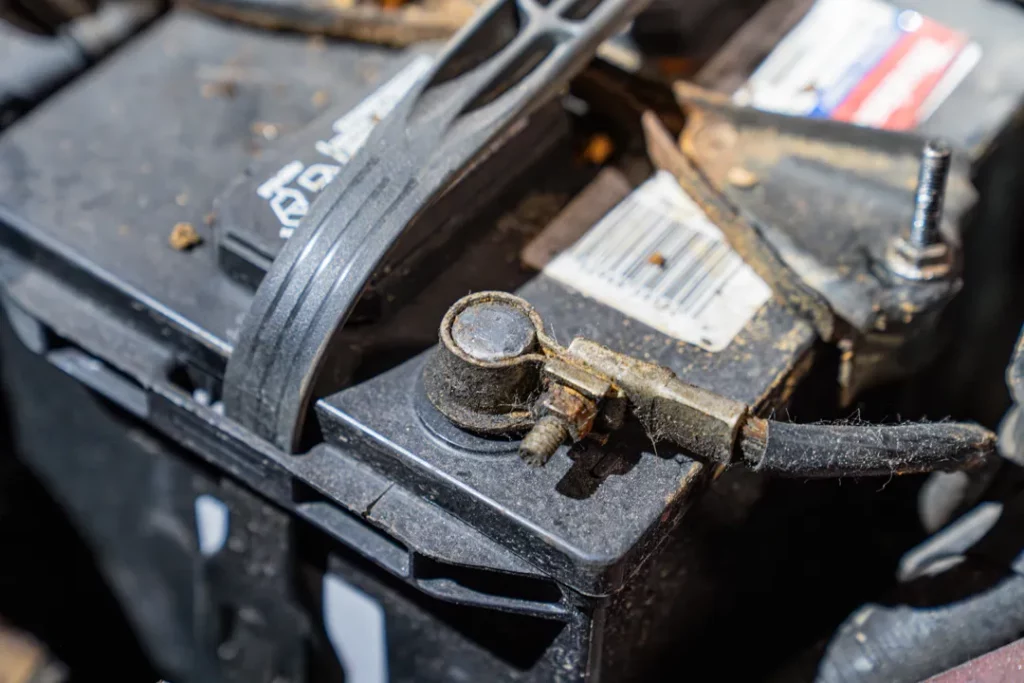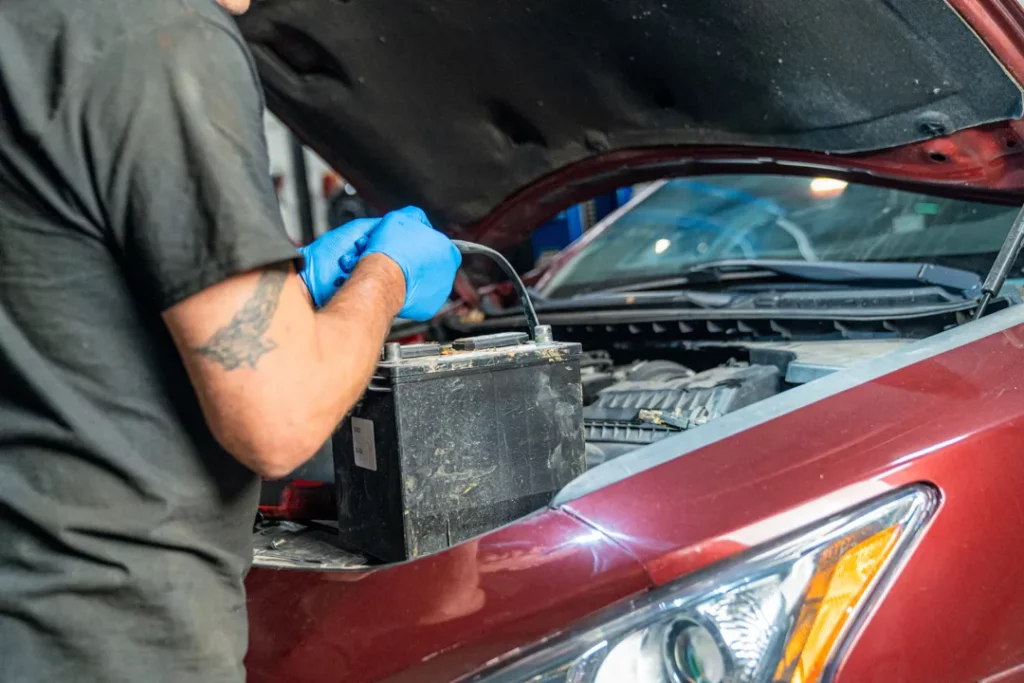Last Updated on 26.09.2024 by hrushetskyy

When it comes to getting your car started, one essential component is your battery, and while the signs of a bad battery are there, they’re often easy to overlook. This can leave you stranded with a car that just won’t start. We give you all the essential information you need to spot when your car battery needs to be replaced.
Bad car battery warnings

Many people rely on their car battery light to tell them when their battery is dead, but there are plenty of other signs to look out for that indicate a problem with your battery and charging system.
Slow engine crank
One of the most obvious signs of a dying battery is a slow engine crank. When you turn the key, if your car starts sluggishly, your battery’s cold cranking amps (CCA) are likely dropping. The lower the CCA, the harder it is for your engine to start, especially in cold weather. Winter is particularly tough on batteries, so you’re more likely to have start-up failures during the colder months.
Dimming headlights and electrical issues
Another place you’ll spot a failing battery is with your vehicle’s electrical components. If your headlights are dimming, especially when you start your engine, or it’s idling, your battery could be the culprit. Your car’s headlights need a stable voltage to work properly, and a weak battery can’t provide that, leading to poor lighting and issues with other in-car electronics. Ideally, your battery should read about 12.6 volts when the car is off and between 13.7 and 14.7 volts when running. Anything less, and it may be time to get your battery replaced.
Corrosion on battery terminals

Another sign of problems with your car battery is corrosion on your battery terminals. When you open up your hood, you might spot white, blue, or green corrosion or buildup on the terminals. This is a sign of leaking battery acid, which hampers electrical flow and reduces the efficiency of your battery. You want to take corrosion seriously as if you ignore it, it can spread to other components, potentially leading to serious issues with your electrical system, as well as a completely dead battery.
Swollen battery case
If you notice your car battery case is swollen, this is a serious sign of problems inside your battery. This is often caused by overcharging or excessive heat. This can damage the internal plates and separators, leading to potential short circuits and a significant drop in performance. So, if your battery case looks swollen, it’s time for a replacement battery.
Age of your battery

If you haven’t replaced your battery in a while, it may be time for a replacement. Most car batteries last between three and five years. As they get older, their ability to hold a charge diminishes. If you can’t remember when you last changed your battery, it’s easy to check the date code on the case to see how old it is. If it’s nearing the end of its lifespan, it’s probably a good idea to buy a new one before you end up with a totally dead car battery.
Fast battery drain
If you’ve noticed that your battery is draining quickly and your battery warning light is coming on more frequently than usual, this could indicate that something is drawing power, even while the car is off. You might even notice your battery draining while the car isn’t being used. This is called a parasitic load, and it can be tricky to identify. If this is the case, we recommend that you visit your mechanic for a check-up.
Battery maintenance: keeping your battery in top shape

If you’d like to avoid the problems of a dead battery and keep your battery going for as long as possible, it’s a good idea to carry out some regular battery maintenance:
- Keep it clean – Make sure your battery terminals are clean and free of corrosion. You can use a mixture of baking soda and water to remove any buildup, ensuring good electrical conductivity.
- Solid mounting – Check that your battery is securely mounted to prevent vibrations, which can cause internal damage.
- Fluid levels – If you don’t have a maintenance-free type of battery you need to regularly check the battery’s fluid level and top it up with distilled water if necessary.
- Sitting idle – If your car is going to be left idle for any extended period of time it might be a good idea to use a battery tender or maintainer to prevent a dreaded dead battery.
Frequently Asked Questions
How do you know if your battery is bad?
Some common warning signs that your battery is bad include slow engine cranking when you turn the key, dimming headlights, a need for frequent jump starts, and unusual electrical issues like flickering dashboard lights or malfunctioning power windows. If your battery is more than three years old, it’s a good idea to get it tested regularly. Also, check for visible signs of damage, like corrosion on the terminals or a swollen battery case. If your car struggles to start, especially in cold weather, it’s time to get your battery checked out by a professional.
How can you tell if car battery needs replacing?
You can tell that your car battery needs replacing when you start to get regular battery issues. These might include electrical issues, including dimmer than usual headlights and your engine being slow to turn over. Batteries generally only last 3-5 years, so if it’s over three years old, this could be a sign of a terminal battery issue. You can also look out for visible signs of wear and tear on your battery, like corrosion on the terminals or a swollen battery case. Additionally, if your car struggles to start, especially in cold weather, it’s likely time for a new battery.
Is it my alternator or battery?
Figuring out whether your alternator or battery is causing car troubles can be tricky. If your car struggles to start or has dim headlights, it might be the battery. But if you notice issues like flickering dashboard lights or your car stalls while driving, the alternator could be to blame. A quick way to test it is by jump-starting your car: if it starts and keeps running, it’s probably the battery; if it dies soon after, the alternator is more likely the problem. However, the best way to find out is to take your car to a mechanic for a full checkup.
How to tell if battery or starter?
When trying to pinpoint whether your battery or starter is causing issues, you should pay attention to the specific symptoms. If you turn the key and hear a clicking sound but the engine doesn’t crank, it’s more likely to be a car battery issue —possibly a dead battery or poor connections. On the other hand, if the engine cranks slowly or makes grinding noises, it might be the starter struggling to engage. A good way to troubleshoot is by checking your battery’s charge with a voltmeter; if it reads below 12 volts, the battery is more likely to be to blame. But if the battery seems fine, then the starter motor might need inspection, especially if it’s been showing signs of wear or age. But the best way to diagnose this issue is with a visit to your local mechanic.
Share the Knowledge
